How to Safely Lower Chlorine Levels in Your Pool
March 18th, 2024
March 18th, 2024
Swimming pools, with their sparkling blue water, often serve as the centerpiece of summer fun and relaxation. However, maintaining that inviting oasis requires careful attention, particularly when it comes to balancing the chemicals that keep it safe and clean. Too much chlorine can turn this pleasant retreat into an unpleasant experience, as anyone who has ever emerged from a pool with itchy skin and red eyes knows all too well.
Chlorine, while essential for killing bacteria and keeping algae at bay, can become problematic if its levels are not carefully monitored and controlled. My neighbor once faced this issue; the water in her pool was so heavily chlorinated that her family could barely swim without feeling discomfort. Determined to solve this, she embarked on a journey to understand how to lower the chlorine levels effectively, ensuring a safer and more enjoyable environment for everyone.
Understanding how to manage chlorine levels involves more than just adding or subtracting chemicals. It requires a grasp of the pool's unique ecosystem, including factors like sunlight, pool usage, and even the local climate. Moreover, there are several strategies, from natural methods to the use of specialized equipment, that can assist in achieving the perfect balance. In this guide, the aim is to explore these techniques, offering practical advice and insights to help you maintain a healthy, inviting pool that everyone can enjoy without the sting of excess chlorine.
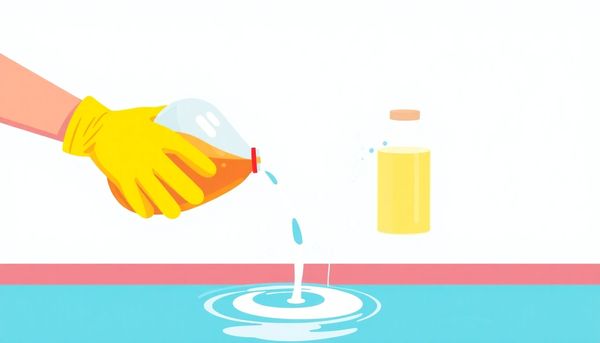
Understanding the chemistry of your pool begins with a simple, yet crucial task: testing water for chlorine levels. For any pool owner, a test kit or test strips are indispensable. Surprisingly, these tools reveal much more than just chlorine concentration; they offer insights into the pool's overall health.
As you dip the test strip into the water, you're not just gauging numbers but uncovering the balance between free chlorine and combined chlorine. Free chlorine is your ally, actively disarming harmful contaminants. On the other hand, combined chlorine, or chloramines, represents chlorine that's been "used up," often leading to that familiar chlorine odor. This smell is not an indicator of excess chlorine, but rather a sign that your sanitizer needs a boost.
My neighbor once joked about the irony of pools smelling like chlorine when they need more of it. It's fascinating how often we misinterpret that scent. Testing regularly, you'll learn to recognize subtle changes, ensuring your pool remains a safe, inviting oasis. Testing also helps in identifying when to shock the pool, a process that rejuvenates your sanitizer by eliminating chloramines.
In short, testing doesn't just help you monitor chlorine levels; it's a ritual that keeps your pool sparkling and your swimmers happy. Whether you're a seasoned pool caretaker or a newcomer, embracing this habit can transform your pool maintenance routine, offering peace of mind and clear waters all season long.
To truly grasp the chlorine game in your pool, the first step is understanding free chlorine levels. These are the active soldiers in your water, battling bacteria and keeping your pool pristine. Imagine hosting a party, where you need enough snacks and drinks for everyone—free chlorine plays a similar role by ensuring there’s enough power to tackle unwanted guests, like algae and bacteria.
Sampling the pool water is a straightforward task that can be a game-changer for pool maintenance. Grab a reliable test kit or test strips and dip them into the water, following the instructions for an accurate reading. You’re hoping for numbers that sit comfortably between 1 and 3 parts per million. Anything above might mean it’s time for intervention, while lower numbers could leave your water exposed to unwanted contaminants.
Once you've determined the free chlorine level, you can decide the next steps. If it’s too high, consider letting some sunshine work its magic. A few hours of sun exposure can naturally bring those levels down. Alternatively, if your chlorine is too low, a quick addition of chlorine could be necessary to maintain that sweet spot of cleanliness. Regular testing allows you to adapt quickly, ensuring your pool remains a safe, swimmable haven. So, keep that test kit handy and make it part of your weekly routine—it’s a small step toward sparkling, balanced waters.
Sunbathing isn’t just for humans. Your pool can benefit from soaking up the sun's rays too. Allowing sunlight to naturally reduce chlorine levels is both eco-friendly and cost-effective. It’s fascinating how ultraviolet (UV) light from the sun can break down chlorine molecules, leading to a reduction of up to 90% in just a few hours. This method is especially beneficial during hot summer days when the sun is at its peak.
A friend of mine once struggled with high chlorine levels post a pool party. Instead of rushing to the store for chemicals, she simply uncovered the pool and let the sunshine do its magic. By evening, the chlorine levels had dropped significantly, showcasing the power of nature.
However, proceed with caution. If your pool is exposed for too long, the chlorine could dip below the recommended 1 to 3 parts per million, which can compromise water sanitation. Those using cyanuric acid, a stabilizer, might notice a slower reduction since it shields chlorine from rapid UV degradation.
Consider this approach a natural balance—using the sun to adjust chlorine while still maintaining a safe swimming environment. It’s a reminder that sometimes the simplest solutions are found right above us, in the form of warm, golden rays. As you enjoy your poolside, remember to let the sun lend a helping hand in maintaining the perfect chemical balance.
Stepping into the realm of pool maintenance, minerals often provide a refreshing twist on reducing chlorine use. Silver and copper have long been appreciated for their antimicrobial properties. When incorporated into your pool’s maintenance routine, they can effectively lower chlorine reliance by up to 50%. This not only saves on chemical usage but also contributes to a more comfortable swimming experience.
Interestingly, mineral systems require minimal upkeep. By placing a mineral dispenser directly into your skimmer basket, you can effortlessly introduce these beneficial elements into your pool. One system can last for about six months and is capable of sanitizing water in pools holding up to 30,000 gallons. It’s as simple as adding this device to your existing setup and letting it work its magic.
In my own experience, transitioning to a pool mineral system was a game-changer. The water felt gentler on the skin and eyes, and my wallet appreciated the reduction in chemical purchases. Plus, the installation process was straightforward, with clear instructions that didn’t require professional assistance.
While you might still need a small amount of chlorine, typically around 0.5 to 1 part per million, the reduced chemical load results in a healthier swimming environment. Incorporating minerals is an efficient and eco-friendly step toward a balanced pool system, easing the burden of excessive chlorine while ensuring that your pool remains sparkling clean.
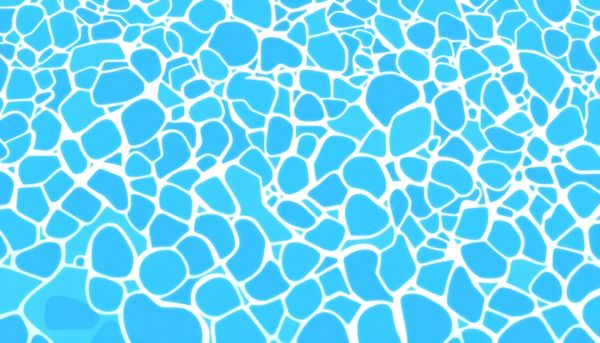
Sunlight, that giant celestial bulb overhead, serves as a natural ally in managing your pool's chlorine levels. Often, the simplest solutions are right before our eyes. Have you ever noticed how clothes dry faster on a sunny day? In a similar vein, sunlight can effectively reduce chlorine in your pool. Ultraviolet rays break down chlorine at a rapid pace, sometimes slashing levels by as much as 90% with just a few hours of exposure. This method is not only eco-friendly but also cost-effective, considering that pool chemicals can be pricey.
However, like all good tools, the sun’s power needs to be wielded wisely. If your pool is already stabilized with cyanuric acid, be aware that this might dampen the sun’s efficiency. Cyanuric acid works as a sunscreen for chlorine, shielding it from the sun’s rays to prevent the chlorine from vanishing too swiftly. But if you're seeking a quick drop in levels, skipping the stabilizer can let the sun work its magic more effectively.
A personal tip: I once left my pool cover off during a particularly sunny weekend, and by Monday, the chlorine levels had decreased significantly, bringing them back to the sweet spot of 1-3 parts per million. But be sure to keep an eye on those levels so they don’t dip too low. After all, balance is key when keeping both eyes and pool water clear and comfortable.
Balancing chlorine in your pool is akin to finding the perfect harmony in a recipe. First, you'll need a reliable pool test kit, an essential tool that helps you understand your water’s chemical makeup. Much like a chef tasting their dish, testing the water lets you know if the chlorine levels have exceeded the ideal range of 1 to 3 parts per million (ppm). This is crucial, as excessive chlorine can be harsh on swimmers and even damage pool equipment.
Once you have your chlorine level readings, it’s time to adjust them. If levels are too high, turning off the chlorine feeder or removing chlorine tablets is a good start. Sunlight is nature’s chlorine balancer; a few hours can significantly reduce chlorine levels. However, if your pool is stabilized with cyanuric acid, this might slow the process.
For a more targeted approach, pool-grade hydrogen peroxide can be a handy ally. It reacts with chlorine, effectively lowering it while also dropping the pH of the water. It’s like wielding a double-edged sword, so testing and adjusting the pH afterward is critical to maintaining a balanced pool environment.
Sometimes, a simple water dilution by adding fresh water can also help in decreasing chlorine levels. This method requires careful monitoring, as it affects other chemical balances. Constant vigilance through regular testing will ensure you achieve the right harmony, making your pool safe and enjoyable for everyone.
Sunlight is not just for sunbathing; it's a natural ally in managing your pool’s chlorine levels. On a sunny day, ultraviolet rays can significantly reduce chlorine concentration, sometimes by as much as 90 percent. One afternoon with the pool cover off can do wonders. However, be mindful not to let levels dip below the safe zone of 1 to 3 parts per million, as this could compromise your pool's cleanliness.
Cyanuric acid (CYA) complicates this sun-powered solution. This chemical, often added to stabilize chlorine, shields it from sunlight degradation. Therefore, if your pool has high CYA levels, sunlight might not be as effective. It’s a delicate balance: enough CYA to protect chlorine on cloudy days, but not so much that it hinders the sun’s ability to help when it shines.
A friend once shared how she managed her pool’s chlorine levels by checking the weather forecast regularly. On bright days, she’d uncover her pool to let the sun perform its natural magic. This approach, simple as it sounds, kept her from having to constantly buy and add extra chemicals. It’s a method combining both cost-effectiveness and environmental awareness, making it a win-win for pool owners looking to harness nature’s gifts for a cleaner swim.
Incorporating mineral-based alternatives can be a game-changer for pool owners looking to cut down on chlorine usage without compromising on water clarity and safety. Minerals such as silver and copper possess natural antibacterial properties, effectively taking on the task of reducing bacteria levels in your pool. This allows you to maintain a lower chlorine concentration—sometimes up to 50% less than conventional methods.
These mineral systems simplify pool maintenance. Imagine a device that quietly works its magic as it sits in your skimmer basket, releasing a steady dose of sanitizing minerals into the water. A friend of mine recently installed such a system, and she reports that not only did it slash her chlorine costs, but her pool water also felt noticeably softer, a bonus her family enjoyed during their summer swims. These systems are designed to last for about six months and can handle pools with a capacity of up to 30,000 gallons.
Moreover, these alternatives are user-friendly, requiring minimal intervention once set up. The minerals work in tandem with lower levels of chlorine, effectively keeping the pool sparkling clean and ready for a dip at any time. If you're keen on maintaining a natural, clear pool without the heavy chemical reliance, mineral-based solutions might just be the treasure chest you need.
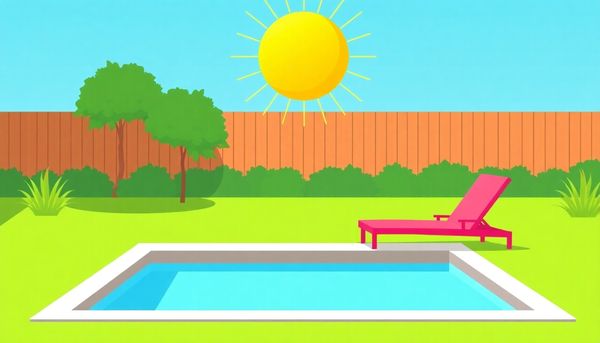
Chloramines might sound like a scientific term best left for chemists, but if you're a pool owner, they're a term you should know well. These pesky compounds are formed when chlorine combines with impurities like sweat, oils, and urine. Ever noticed that strong 'chlorine' smell? Ironically, that’s chloramines at work, signaling it's time for action.
A pool shock treatment can be your best friend here. This process involves adding a large dose of chlorine to the water to break down chloramines, effectively resetting the balance. It's akin to hitting a reset button on your pool’s cleanliness. When I first encountered chloramines, I was skeptical about the shock treatment. However, after an afternoon of research and a few expert consultations, I ventured into the world of pool shock. With a bit of trepidation, I followed the steps, adding the recommended amount and letting the magic unfold overnight.
By morning, the strong odor had dissipated, and the water seemed to sparkle a little more. Shocking your pool not only helps remove those unwanted chloramines but also revitalizes the active chlorine, ensuring your pool remains a safe oasis. Remember, timing matters—choose a day when the sun is less intense to prevent rapid chlorine degradation. Once the shock treatment is complete, a quick test of your water ensures everything is back to optimal levels, ready for your next swim.
Ensuring the right balance of chlorine in your pool begins with consistent testing and vigilant monitoring. Grab your trusty pool testing kit or a digital tester for precision, and check your water regularly. Aiming for a chlorine level between 1 to 3 parts per million is key to maintaining a safe swimming environment. This isn't just about keeping the water clear but also ensuring it's healthy for swimmers.
Once, I thought my pool's chlorine levels were perfect, just because the water looked pristine. Wrong! A quick test proved they were too high. This taught me the importance of regular checks; looks can be deceiving. Free chlorine is what you want to measure—it's the active agent fighting off bacteria. If the test reveals combined chlorine, often marked by that familiar "pool smell," it indicates the sanitizer is losing its effectiveness. Time to shock the pool!
Moreover, never underestimate the role of pH in this equation. Keep it between 7.4 and 7.6. Off-balance pH can lead to irritation and complicate your chlorine management. After any adjustment, retest to confirm the water's chemistry is just right. Consistent monitoring not only keeps the pool safe but also extends the lifespan of your pool equipment. Regular checks transform pool care from a chore into a seamless routine, ensuring every swim is worry-free.
Sunlight holds a remarkable power when it comes to managing chlorine levels in your pool. On a hot summer day, the sun can do more than just warm the water—it can naturally lower chlorine levels, making your pool safer for swimming. This happens because ultraviolet rays break down chlorine molecules, reducing their concentration in the water. On a bright afternoon, you might find that just a few hours of exposure can decrease chlorine levels by up to 90 percent. However, there’s a balancing act involved; it’s crucial to ensure that chlorine doesn’t drop below the safe threshold of 1 to 3 parts per million.
For those relying on cyanuric acid (CYA) as a stabilizer, the process might be less effective. CYA serves to shield chlorine from sunlight degradation, meaning pools with higher CYA levels might see slower reductions. My neighbor, for instance, discovered that her pool, rich in CYA, retained chlorine longer, requiring more careful management of sunlight exposure.
To optimize results, consider adjusting pool covers to allow direct sunlight during peak hours. Yet, keep a watchful eye on chlorine levels to prevent them from falling too low. This method, though simple, is a gentle reminder of nature's role in maintaining a healthy pool environment. Just remember, regular testing ensures your pool remains a haven, safe and ready for that refreshing swim.
Ever considered harnessing the power of minerals to reduce chlorine dependency in your pool? It's an innovative approach that not only curtails chemical use but also enhances your swimming experience. Mineral systems, utilizing elements like silver and copper, act as natural sanitizers, effectively neutralizing bacteria and algae. This method can cut your chlorine requirements by up to half, maintaining effective pool sanitation with as little as 0.5 to 1 part per million of chlorine.
In my own pool, I replaced a cumbersome chlorine routine with a user-friendly mineral system. It was a game-changer—less time fussing over maintenance meant more time enjoying the water. The setup is straightforward: simply place a mineral cartridge into your skimmer basket. These cartridges usually last around six months, capable of treating up to 30,000 gallons of water, which is perfect for most residential pools.
Moreover, the shift to a mineral system doesn't just reduce chlorine levels; it also minimizes the harsh effects often associated with chlorine pools, such as skin irritation and that unmistakable chemical odor. It's a win-win situation—sustainable and swimmer-friendly. If you're tired of juggling chlorine levels and looking for a greener, gentler pool environment, a mineral system might just be the solution waiting to transform your pool care routine.

Transitioning to a saltwater system can be a game-changer for pool owners looking to reduce their reliance on traditional chlorine. Instead of constantly juggling chlorine tablets and worrying about harsh chemical levels, imagine the ease of simply adding salt. As the saltwater passes through a generator, it transforms into chlorine, maintaining the desired levels without the manual fuss. This seamless process not only keeps the pool sanitized but also ensures that chlorine levels remain consistent, usually around the ideal 3 parts per million.
Switching to a saltwater system can also enhance the swimming experience. With softer water and less of the dry skin and eye irritation often associated with chlorinated pools, family and friends might find themselves lingering in the pool longer. I've seen a neighbor's kids, who used to shy away from the pool for fear of red eyes, now eagerly jump in every chance they get. The water feels gentler, reminiscent of the ocean, minus the stickiness.
Maintenance becomes simpler too. Saltwater systems automatically monitor chlorine levels, reducing the need for frequent testing and adjustments. While the initial setup requires some investment, the long-term benefits—both in terms of reduced chemical purchases and improved swimming comfort—make it a worthy consideration for those tired of the traditional chlorine routine. Whether you seek convenience or a more pleasant swimming environment, saltwater systems offer a compelling alternative.
Sunshine, a pool's natural ally, serves as a gentle remedy for excessive chlorine. When levels skyrocket, simply let the sun work its magic. Exposure to direct sunlight for a few hours can diminish chlorine content significantly, up to 90% in some cases. However, this method requires careful observation—ensure the chlorine levels don’t drop below the safe range of 1 to 3 parts per million. A balance must be maintained to keep your pool both inviting and sanitized.
For those relying on saltwater systems, consider halting the saltwater chlorine generator temporarily. This pause allows existing chlorine to dissipate naturally. Meanwhile, removing chlorine tablets from both skimmers and floaters is another straightforward step to prevent any increase in levels. Every little bit helps in managing that delicate balance.
Hydrogen peroxide, specifically formulated for pools, offers a swift chemical approach. By reacting with chlorine, it produces harmless water and oxygen. It's essential to monitor the pH, aiming for levels at or above 7.0 for optimal results. Once applied, retest both chlorine and pH levels to ensure they remain in harmony. Adjust as necessary to avoid having the pool become too acidic.
For those preferring a more hands-on approach, dilution is key. Replacing a portion of your pool water with fresh water not only lowers chlorine but also refreshes the entire chemical balance. Remember to retest and adjust after this process to maintain overall pool health. Through these varied methods, reducing chlorine becomes a manageable task, keeping your pool a refreshing haven all summer long.
Switching to a mineral system can be an eye-opener for pool owners keen on reducing chlorine reliance. While traditional methods demand constant vigilance, mineral systems offer a breath of fresh air, easing maintenance and enhancing water quality. By incorporating minerals like silver and copper into your pool, you can significantly lower chlorine usage, often down to just 0.5 to 1 parts per million. These natural elements work harmoniously to combat bacteria, providing a safer, gentler swimming experience without the harsh chemical aftereffects.
Years back, a friend of mine was struggling with itchy skin from conventional chlorine treatments. After switching to a mineral system, he noticed a drastic improvement, not just in skin comfort but in water clarity too. Mineral systems are straightforward to use. Many options are available, including simple in-skimmer dispensers that integrate seamlessly with your existing setup. These devices effortlessly release beneficial ions into the water, maintaining cleanliness for up to six months, even in large pools.
Besides the ease, there's an understated advantage: the reduced hassle of chlorine management. Imagine skipping those frantic trips to the store for chlorine supplies or constant testing and adjustments. As a bonus, the initial investment often pays for itself by cutting down on chlorine costs over time. Transitioning to a mineral system isn't just about reducing chlorine; it's about enhancing the overall pool experience, making every dip a delight.
Switching to a saltwater pool can transform your swimming experience while reducing reliance on traditional chlorine methods. Traditional pools require frequent additions of chlorine tablets or liquid to maintain safe swimming conditions, often leading to fluctuations in chlorine levels. In contrast, saltwater pools utilize a unique system where salt is converted into chlorine through a process called electrolysis. This method maintains a constant, lower level of chlorine, usually between 1 to 3 parts per million, providing consistent water quality with less manual intervention.
The transition to a saltwater system isn’t as daunting as it may sound. The process begins by installing a saltwater chlorine generator, which integrates into your existing pool filtration system. This device does the heavy lifting, converting salt into chlorine as the water circulates. It’s a one-time installation that dramatically simplifies pool maintenance. Once the generator is in place, you’ll need to add salt to the pool, maintaining a salinity similar to that of tears—not nearly as salty as the ocean, which means no stinging eyes.
Saltwater pools are appreciated not just for their stable chlorine levels but also for the softer feel of the water, which many swimmers find more pleasant on the skin. While the upfront cost of the generator might be higher than a season's supply of chlorine, the long-term savings and reduced maintenance effort often make it a worthwhile investment. Plus, there's something almost magical about effortlessly maintaining a sparkling pool with just a pinch of salt.
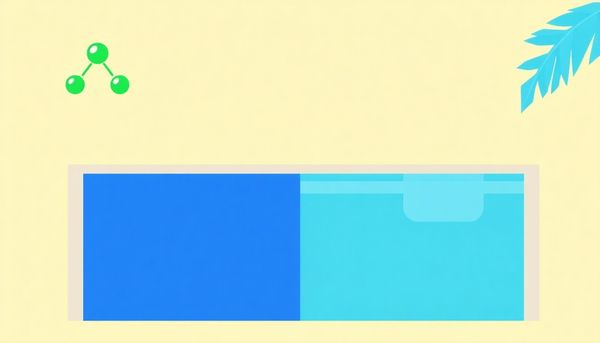
Ever thought about using pool-grade hydrogen peroxide as a secret weapon against excessive chlorine in your pool water? This powerful chemical might just be the unsung hero you need. Acting as a reducing agent, hydrogen peroxide targets chlorine directly, converting it into harmless water and oxygen. But like any hero, it has its quirks. It thrives in a balanced environment, so ensuring your pool's pH is at least 7.0 before adding it is crucial.
A personal anecdote comes to mind when my neighbor, an avid swimmer, faced the relentless battle of high chlorine levels one summer. Desperate for a solution, he stumbled upon hydrogen peroxide. With cautious optimism, he added it to his pool. To his delight, the chlorine levels began to lower effectively. His initial skepticism turned into advocacy as he shared this discovery at our neighborhood barbeque, urging others to try it out.
When using hydrogen peroxide, precision is key. Start small, integrating measured amounts and testing the chlorine levels frequently. This method helps avoid any drastic pH drops, preventing your pool from becoming too acidic. Monitoring is essential—once the chemical has worked its magic, re-evaluate and balance your pool’s pH to maintain that perfect swimming oasis. This approach not only controls chlorine levels but also ensures your pool remains a safe and inviting spot for fun and relaxation.
Altering the chemical balance of your swimming pool can feel like a delicate science experiment. Hydrogen peroxide, often known for its uses in everyday first aid, turns out to be a surprisingly effective method for adjusting chlorine levels in your pool. When used properly, pool-grade hydrogen peroxide acts as a neutralizing agent, breaking down excess chlorine into harmless byproducts—water and oxygen. This approach not only reduces chlorine but also adds a layer of simplicity to pool maintenance.
Before you begin, it's crucial to get your pool's pH in check. Hydrogen peroxide works best at a pH of 7.0 or higher, so starting off with accurate pH readings can save you a headache down the road. Once you're ready, introduce the hydrogen peroxide gradually. A gentle hand is key here; adding it in small increments allows you to monitor changes closely. After each addition, retesting your chlorine levels ensures you’re on the right track.
There's more to this method than meets the eye. While effective, hydrogen peroxide can also lower your pool's pH significantly. Thus, post-treatment testing is essential, not just for chlorine, but also to stabilize your pH back into its optimal range of 7.4 to 7.6. A personal tip: keep a chemical log. It serves not just as a record but also as a guide for future adjustments, making sure your pool remains a safe and pleasant oasis.
Adjusting the pH of your pool may not sound glamorous, but it’s akin to fine-tuning a musical instrument. Just as a musician seeks harmony, a pool owner strives for that perfect chemical balance. pH stands as a critical player in the concert of pool chemistry, affecting not only the comfort of swimmers but also the effectiveness of chlorine. When your pH is in the sweet spot—between 7.4 and 7.6—chlorine can perform at its peak, efficiently sanitizing the water without any irritating side effects.
Once, a friend of mine had a seemingly clean pool that left everyone with red, itchy eyes after a swim. The culprit wasn’t excessive chlorine, as initially suspected, but a pH level that was off the chart. A quick adjustment, and the pool transformed into a crystal-clear oasis, comfortable and welcoming. This experience highlights how pH can make or break the swimming experience.
To adjust the pH, you might need to add pH increaser (soda ash) or pH decreaser (muriatic acid). Always start by testing the water; even a slight change can have a significant impact. Regular checks ensure you maintain that ideal range, allowing chlorine to work effectively and efficiently. Remember, achieving the right pH not only keeps your chlorine levels in check but also extends the life of your pool equipment and keeps surfaces sparkling clean. So, the next time your pool seems a bit off, think of it as a gentle reminder to tweak the pH and restore balance to your aquatic haven.
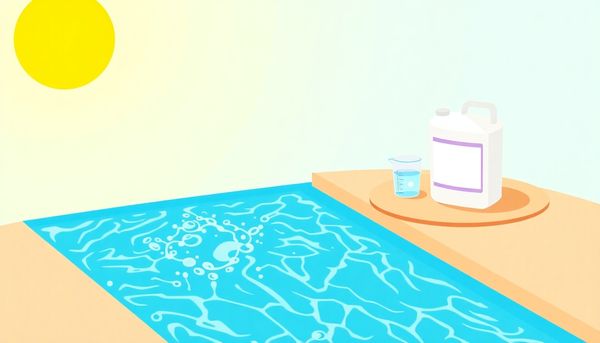
This article provided insights into maintaining your pool. Start your pool care journey today!
Want to become a pool maintenance expert? Our free Pool School course covers everything you need to know about pool care. From basic maintenance to advanced troubleshooting, you'll learn how to:
Join over 10,000 pool owners who have already transformed their pool care routine. Get started with our free Pool School course today!